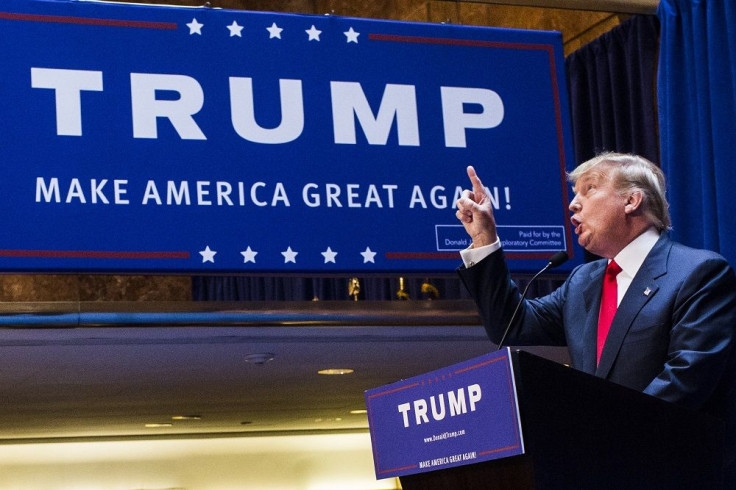Cable News Ratings And Presidential Elections: A 2016 Love Story For MSNBC, Fox News And CNN

Are you tired of seeing Donald Trump’s sour mug on TV but find yourself unable to look away? No need to seek professional help. It’s perfectly normal. In fact, there is a logical reason why Trump and his fellow 2016 hopefuls have dominated the news cycle for much of the summer: Presidential elections mean big ratings.
International Business Times poured through nine-and-a-half years’ worth of Nielsen data for the three major cable news networks. As indicated by the suspension bridge-like pattern that emerges in the chart below, viewership tends to be higher during election years and spike significantly in the months leading up to the elections.
The effect is most pronounced for MSNBC, whose ratings struggles over the last few years have been extensively catalogued and commented on. The network’s left-leaning slant, which began in 2006 in the era of Keith Olbermann, was initially a successful formula, in part because it rode a wave of ratings increases that began with the 2008 election cycle.
Famously, MSNBC’s ratings fell off a cliff after the re-election of Barack Obama in 2012, and they have not recovered since. But there have been recent glimmers of hope. In June, with the 2016 race already heating up, the network saw its highest prime-time monthly average of the year. Rumors have been swelling that Andy Lack, chairman of NBC News, is planning big changes for the ratings-challenged MSNBC, but if history is any guide, the network can expect a big boost in the coming months as the election cycle heats up.
Fox News also tends to see its biggest prime-time spikes around election time. In October 2012, it averaged 3.5 million viewers, almost double its typical audience.
News programming is notoriously unpredictable, often ebbing and flowing with major events and periods of relative calm. The CNN portion of the chart above best demonstrates this erraticism. Notice the spike CNN saw in March 2014, the same month it obsessively covered the missing Malaysian Airlines Flight 370. Media commentators mocked, but CNN had some of its best ratings of that year.
The problem with major news events is you never know when they’ll strike. But for TV programmers and advertisers, presidential elections offer a rare sense of certainty, a sure thing in a business of risky bets. Given that these golden proceedings only come around every four years, it’s little wonder why networks would want to stretch out the season for as long as they can.
The current election cycle doesn’t just seem longer -- it actually is longer. As Larry Sabato, director of the University of Virginia Center for Politics, pointed out via Twitter earlier this month, the 17 declared Republican candidates vying for the top job marks a record for any single party. There’s also more money in the race. According to a study published Monday by the Cook Political Report, TV ad spending on the 2016 campaign is projected to reach $4.4 billion.
Add it all up and TV news viewers can expect a very long 16 months. Which for TV networks, won’t be long enough.
Christopher Zara is a senior writer who covers media and culture. News tips? Email me . Follow me on Twitter @christopherzara.
© Copyright IBTimes 2025. All rights reserved.






















